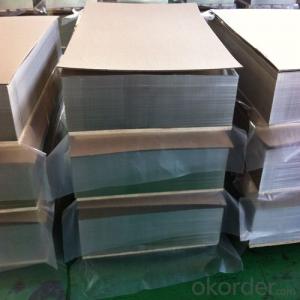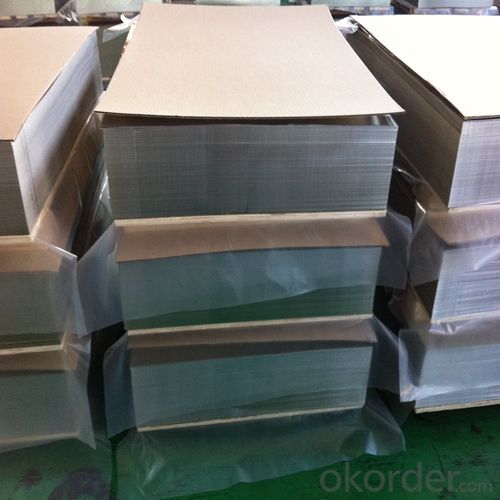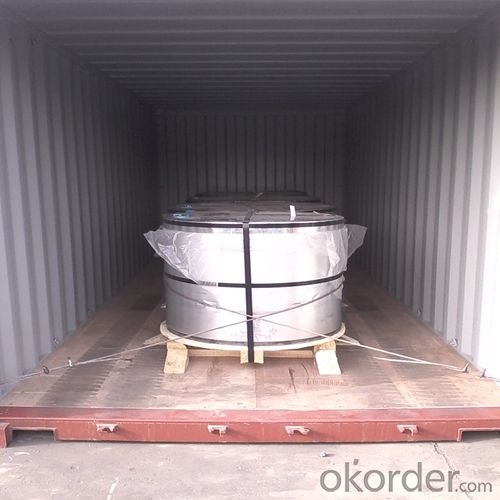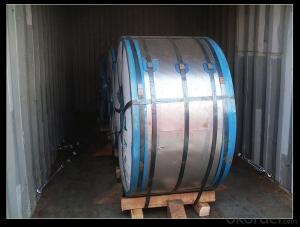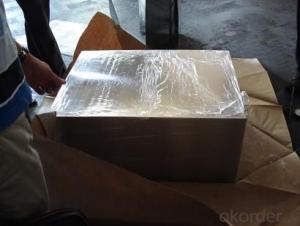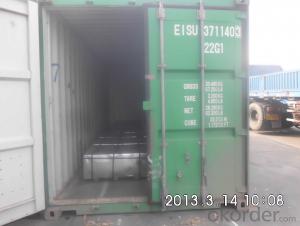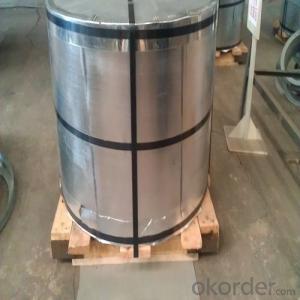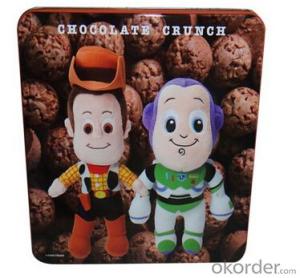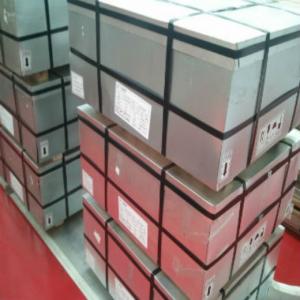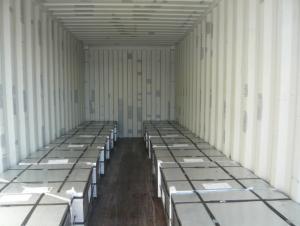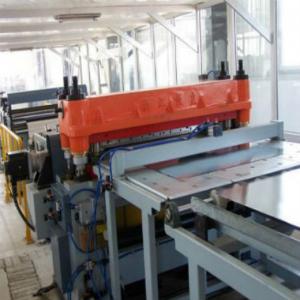Prime Quality Tinplate and Tin Free Steel for Cans
- Loading Port:
- Shanghai
- Payment Terms:
- TT OR LC
- Min Order Qty:
- 25 m.t.
- Supply Capability:
- 25000 m.t./month
OKorder Service Pledge
OKorder Financial Service
You Might Also Like
Specification
1.Structure of Prime Quality Tinplate and Tin Free Steel for Cans Description
Also known as chromed steel, tin-free steel (TFS) is obtained by coating the metal base (low-carbon steel) with an ultra-thin layer of metallic chrome and then with a chromium oxide layer.
The product complies with ASTM A-657 Specification and is manufactured with low current density (TFS-III) and is supplied only in coils of up to 12 metric tons.
2.Main Features of the Prime Quality Tinplate and Tin Free Steel for Cans
Formability and strength – Tinplates have got very good formability and strength. By selecting a proper temper grade, appropriate formability is obtained for different applications as well as the required strength after forming.
Corrosion resistance – Tinplate has got good corrosion resistance. By selecting a proper coating weight, appropriate corrosion resistance is obtained against container contents. Coated items should meet 24 hour 5 % salt spray requirement.
Solderability and weldability – Tinplates can be joined both by soldering or welding. These properties of tinplate are used for making various types of cans.
Hygienic – Tin coating provides good and non toxic barrier properties to protect food products from impurities, bacteria, moisture, light and odours.
Safe – Tinplate being low weight and high strength makes food cans easy to ship and transport.
Eco friendly – Tinplate offers 100 % recyclability.
Tin is not good for low temperature applications since it changes structure and loses adhesion when exposed to temperatures below – 40 deg C.
3.Prime Quality Tinplate and Tin Free Steel for Cans Images
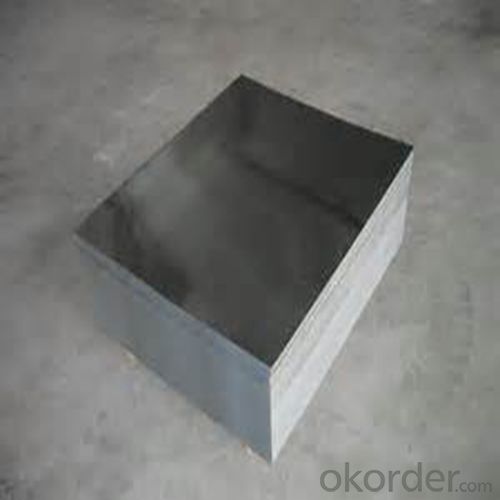
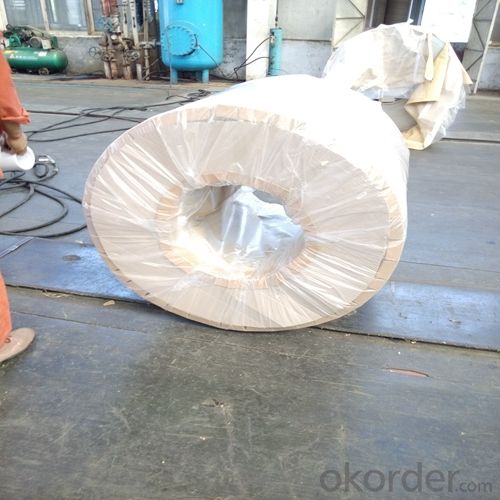
4.Prime Quality Tinplate and Tin Free Steel for Cans Specification
Specification of :
Standard: ISO 11949 -1995, GB/T2520-2000,JIS G3303,ASTM A623, BS EN 10202
Material: MR,SPCC
Thickness:0.15mm - 0.50mm
Width: 600mm -1150mm
Temper: T1-T5
Annealing: BA & CA
Coil Inner Diameter: 508mm
Weight: 6-10 tons/coil 1~1.7 tons/sheets bundle
Passivation:311
Oil: DOS
Surface: Finish,bright,stone,matte,silver
5.FAQ of Prime Quality Tinplate and Tin Free Steel for Cans
- What is tinning and how does it work?
Tinning is the process of thinly coating sheets of wrought iron or steel with tin, and the resulting product is known as tinplate. It is most often used to prevent rust.
- Do you only have prime quality tinplate?
We can supply both prime and second quality tinplate.
- Q: How does tinplate perform in terms of resistance to chemical agents?
- Tinplate generally exhibits good resistance to chemical agents due to the protective layer of tin coating. This coating acts as a barrier, preventing direct contact between the metal and the chemicals, thereby minimizing the risk of corrosion or chemical reactions. However, the specific performance can vary depending on the type and concentration of the chemical, as well as the duration of exposure.
- Q: What are the main applications of tinplate in the agricultural industry?
- Tinplate is commonly used in the agricultural industry for the production of cans and containers to store and preserve agricultural products such as fruits, vegetables, and dairy products. It provides a protective barrier against moisture, oxygen, and light, ensuring the quality and freshness of the stored items. Additionally, tinplate is also utilized for packaging agricultural chemicals and fertilizers, as it offers resistance to corrosion and acts as a reliable barrier against chemical reactions.
- Q: Does tinplate require any specific handling or storage conditions?
- Yes, tinplate does require specific handling and storage conditions. It should be protected from moisture and kept in a dry environment to prevent rusting. Additionally, it is recommended to store tinplate in a cool and well-ventilated area to maintain its quality and prevent any potential damage.
- Q: What are the main challenges in tinplate coating thickness control?
- One of the main challenges in tinplate coating thickness control is achieving uniformity across the entire surface of the tinplate. The coating thickness must be consistent and within the desired range to ensure proper protection and functionality of the tinplate. Additionally, controlling the coating thickness requires precise measurement and monitoring techniques as well as the ability to adjust the coating process parameters in real-time to account for any variations or deviations. Another challenge is ensuring the adhesion of the coating to the tinplate surface, as poor adhesion can lead to coating defects and reduced performance. Lastly, controlling the coating thickness while maintaining cost-effectiveness can be a challenge, as it requires optimizing the coating process to minimize material waste and reduce production costs.
- Q: How does tinplate contribute to the overall sustainability of the supply chain?
- Tinplate contributes to the overall sustainability of the supply chain in several ways. Firstly, it is a recyclable material, meaning that it can be reused multiple times without losing its properties. This reduces the need for virgin resources and minimizes waste generation. Secondly, tinplate has excellent barrier properties, protecting products from moisture, light, and oxygen, thereby extending their shelf life and reducing food waste. Additionally, tinplate is lightweight, making it more energy-efficient to transport compared to alternative packaging materials. Finally, tinplate is highly durable, ensuring that products remain intact during transit, reducing the risk of damage or spoilage. Overall, the use of tinplate in the supply chain promotes resource efficiency, waste reduction, and improved product preservation, contributing to a more sustainable and environmentally-friendly approach.
- Q: What are the different types of tinplate surface treatments?
- There are several different types of tinplate surface treatments, including electrolytic tinplate (ETP), blackplate, tin-free steel (TFS), and lacquered tinplate.
- Q: How long does tinplate packaging last?
- Tinplate packaging can last for several years, depending on the storage conditions and how well it is maintained.
- Q: What details should I pay attention to when purchasing tinplate packing boxes?
- At present, many domestic buyers can in the face of supplier's first bid, don't know in the condition of love at bargain, or fixed price cut 20 percent off. This practice is very inappropriate, in the procurement of bargain is necessary, but have not thought about the hidden dangers after bargaining?.
- Q: What are the common industry standards for tinplate?
- The common industry standards for tinplate include specifications related to the thickness, coating weight, surface finish, and mechanical properties of the tinplate. These standards ensure consistency and quality in the production and use of tinplate in various industries such as packaging, automotive, and construction. Some widely recognized standards include ASTM A623, EN 10202, and JIS G3303, which outline the requirements and testing methods for tinplate.
- Q: What are the common challenges in processing tinplate?
- Some common challenges in processing tinplate include achieving uniform tin coating thickness, preventing scratches or abrasions during handling and transportation, maintaining dimensional stability during cutting and shaping processes, ensuring proper adhesion between the tin coating and the base metal, and minimizing the formation of defects such as dents or wrinkles. Additionally, maintaining cleanliness and avoiding contamination during processing are also significant challenges.
Send your message to us
Prime Quality Tinplate and Tin Free Steel for Cans
- Loading Port:
- Shanghai
- Payment Terms:
- TT OR LC
- Min Order Qty:
- 25 m.t.
- Supply Capability:
- 25000 m.t./month
OKorder Service Pledge
OKorder Financial Service
Similar products
Hot products
Hot Searches
Related keywords
